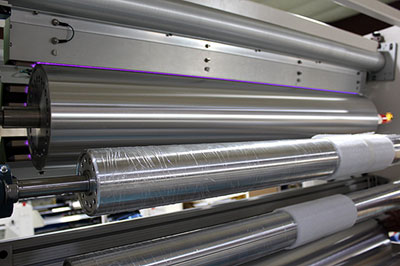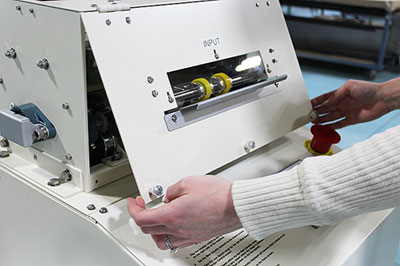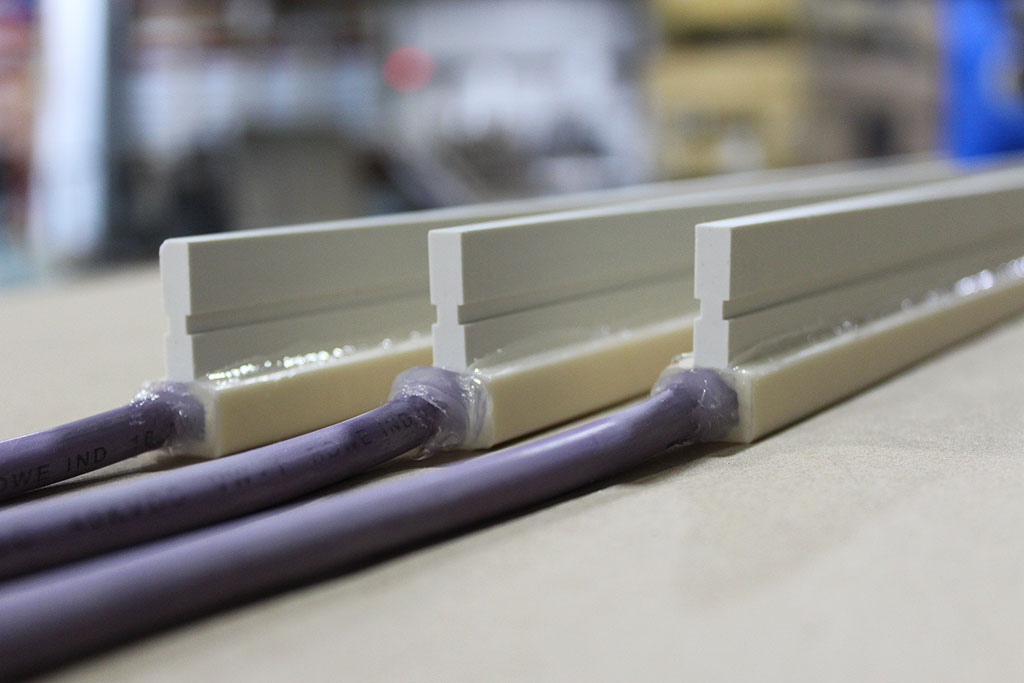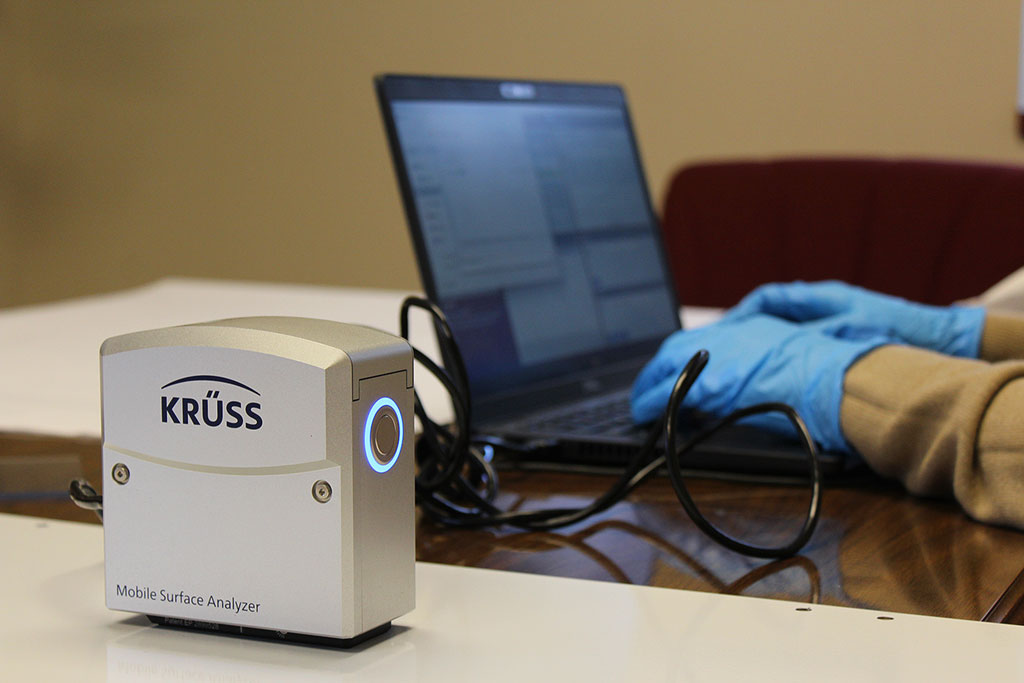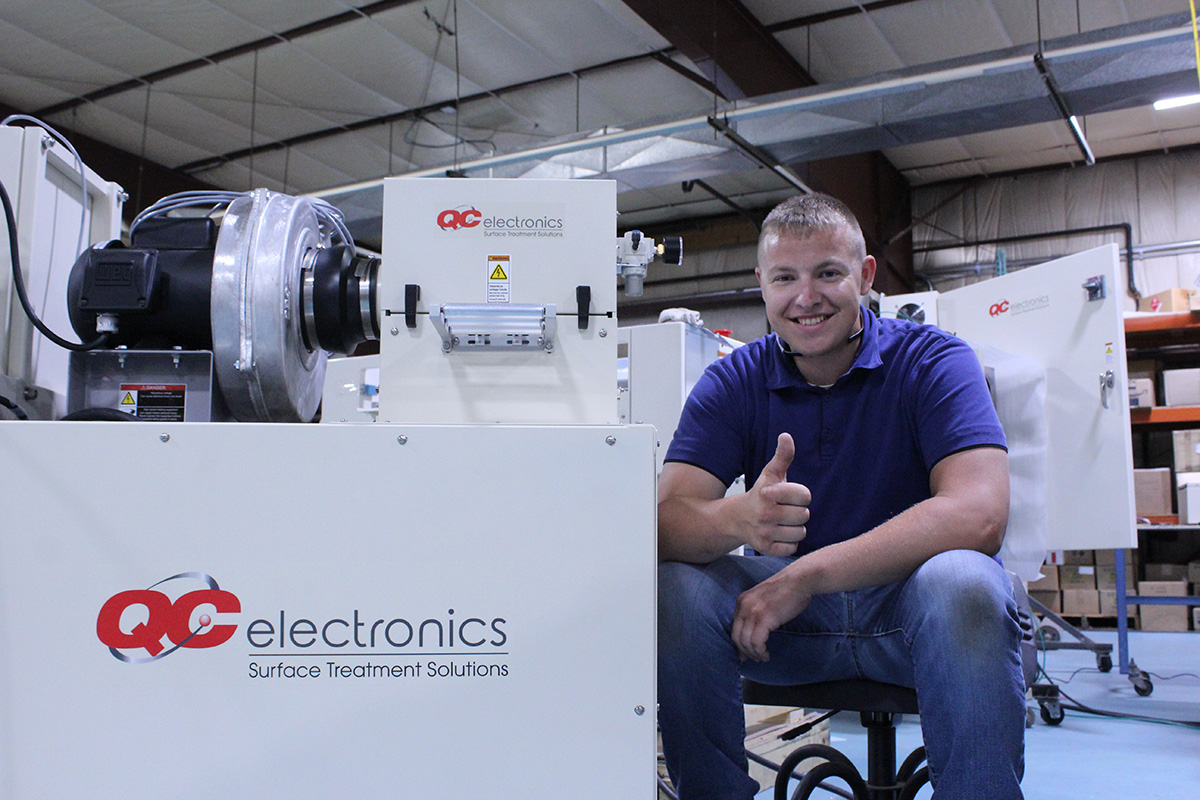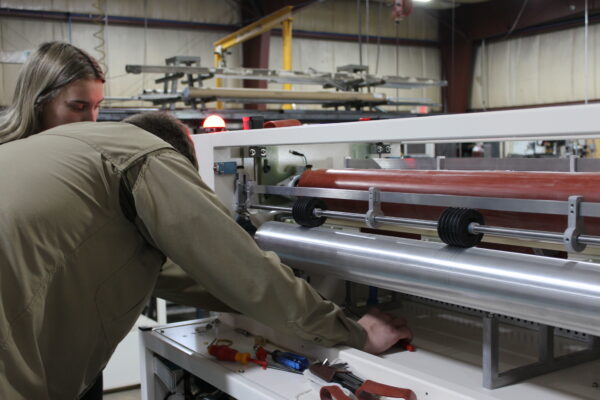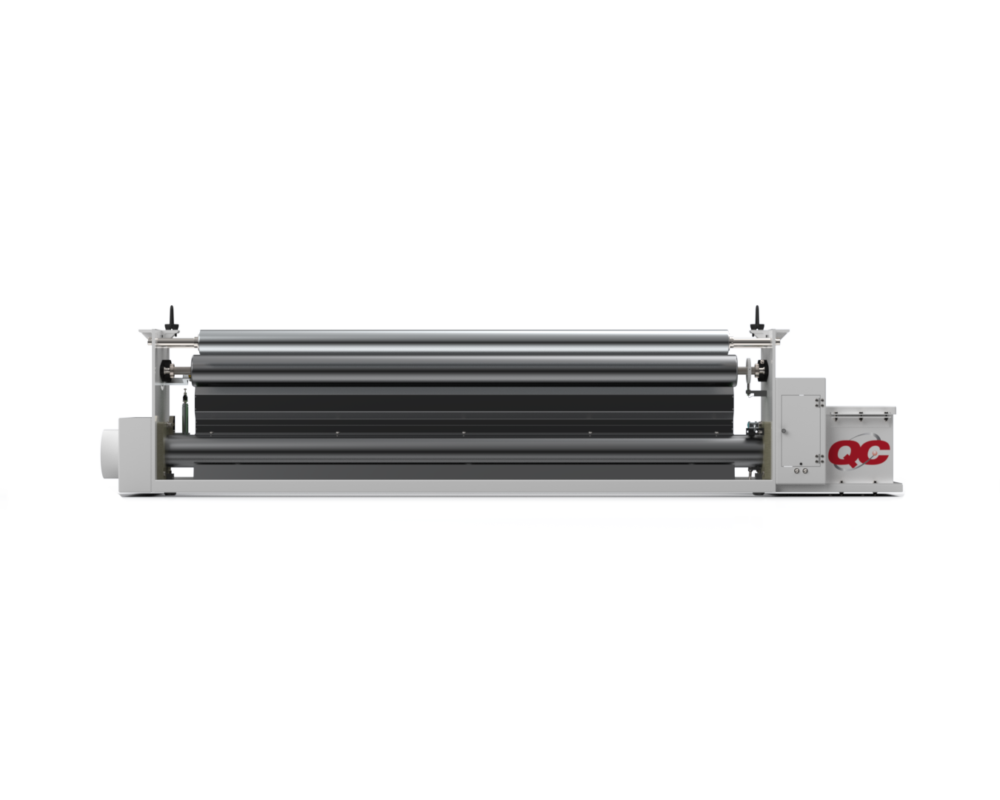Surface treatment definition:
“The modification of the surface to increase surface tensions resulting in better bonds of ink, glues and laminates.”
Corona treatment is a web surface preparation process that applies corona discharge to a substrate to raise the surface energy to a compatible level with inks, glues, and lacquers to allow a better bond. Corona discharge is a continuous plasma of ionized particles formed in the air gap of the corona treater. When the surface of the substrate is exposed to the field of ionized particles (i.e., corona discharge) the surface molecules are excited, and the molecular surface is modified.
It is commonly utilized by converters of blown and cast film, food packaging, plastic bags, tapes, and labels. The process of web treating is done in-line.
The four key elements to a corona treatment system:
- High voltage power supply and transformer
- Electrode assembly
- Dialectric upon which the ‘corona’ is formed
- Air gap between the electrode and the roller
High Voltage Power Supply
The generator, also known as the power supply, must operate under a wide range of conditions. When starting, the power supply is required to run at a high resistance, no load condition unit corona is achieved. At this point, the resistance of the air gap between the electrode and the ground roll decreases dramatically and the loading rapidly increases. The generator must adjust with the sudden change in loading and must also be capable of obtaining full power over a wide range of load conditions. QC Electronics’ power supply automatically compensates for changes in loading so manual adjustments are not required.
High Voltage Transformer
The high voltage transformer takes the generator output and steps the voltage up to the level necessary to produce corona (ionize the air between the electrode and ground roll).
Electrode Assembly and the Air Gap
The treatment station, regardless of the type, can be described in its simplest form as a capacitor (two plates separated by a dielectric). The output of the high voltage transformer is applied to one plate, normally a stationary electrode. The other plate, often a roll, is electrically grounded. A buffer dielectric of some type is required between the plates to limit current once the corona is initiated. This dielectric can either be located on the roll or the electrode. An air gap exists between the electrode and the roll. When the voltage at the electrode reaches a sufficient level to ionize the air in the gap, corona discharge is achieved.
Types of Web Treaters
There are essentially two types of web corona treatment systems – bare roll and covered roll.
In the bare roll system, the dielectric material is bonded to the electrode and the web rides on an uninsulated, or “bare” machine roller. If the material is conductive (i.e., aluminum foil or metalized film), a bare roll system must be utilized. The bare roll system can treat both conductive and nonconductive materials, which is why the bare roll system is the most commonly utilized.
The electrodes in bare roll systems are typically made of ceramic. Ceramic is brittle and easily damaged by impact, such as a splice in the web. The key to successful bare roll treating is the design of the electrode assembly. See QC’s bare roll electrode assembly below and take a look at the bare roll corona treater here.

Lab studies completed by QC Electronics have shown covered roll systems treat nonconductive materials to higher surface energies with lower power settings than the bare roll system. This makes the covered roll system a top choice for blown and cast film extruders.
Covered roll systems are designed specifically for nonconductive applications. Common materials for a covered roll corona treater include any nonconductive polymers (HDPE, LLDPE, PP to list only a few).
Covered roll systems feature a metal electrode. The corona discharge expands the entire width of the electrode, allowing for longer dwell time. Dwell time is a factor in treat levels – it is the time elapsed where the substrate is exposed to the corona discharge. The electrode is segmented to allow for lane treating and treat width adjustments. The individual metal ‘keys’ are clicked down to deactivate the corona on that key and adjust the web width. See QC’s covered roll corona treater here.
Questions about successful surface treatment?
QC Electronics has established a corona treatment laboratory for the corona treatment of samples, extensive material analysis and consultation. The laboratory consists of a 48″ corona treatment system (converts to bare roll or covered roll depending on application), molecular material characteristic measurement devices for pre- and post-treatment material analysis, and various dyne testing devices. This lab service is free of charge to new and existing QC customers.
For more information, contact sales@qcelectronics.com.
